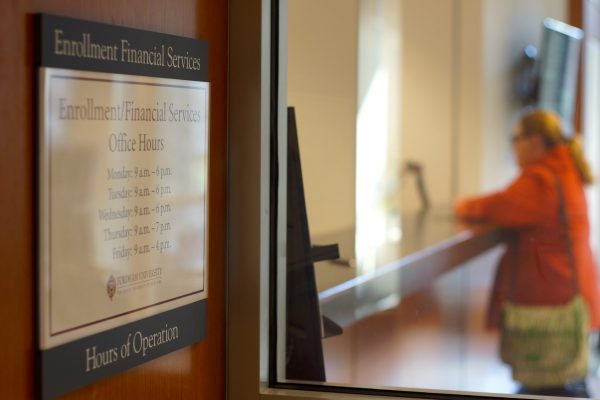Fordham Needs To Help Its Low-Income Students
December 13, 2016
We romanticize being broke in college. Cups of ramen in dorm rooms eaten with stolen dining hall silverware—it’s an image passed from parent to child, older sibling to younger sibling. But it misses reality. Being broke—truly broke—in college isn’t cute. It’s not a caricature. It’s having an anxiety attack on the rare occasion that you buy a cup of coffee, because your single mom’s two jobs are supposed to put you through school, not to get you a latte. Every student pretends to be broke; joking about having 20 bucks to get you through the next two weeks is a rite of passage. But the kids that are really broke—kids in situations like mine or worse, go through their schooling with a horrific burden.
It’s become an accepted reality that university tuition is out of control. We see financial strain as a practically unavoidable sacrifice of higher education. It’s a problem, but we see it as a flaw in America’s schooling system rather the individual universities. This isn’t the case with Fordham. Our financial aid practices are actually tied to our philosophies as a Jesuit school; by priding ourself on our focus on social awareness and activism, by championing Saint Ignatius, we hold ourself to a higher standard with regard to helping low-income students go to school.
Pell Grants, as defined by the Office of Federal Student Aid, “provide need-based grants to low-income undergraduates to promote access to postsecondary education.” As of this year, a student in need could get as much as $23,260. In The New York Times’ study “Top Colleges Doing the Most for Low-Income Students,” which ranked the percentages of students receiving Pell Grants, Fordham ranked number 164 out of 179. Only 14% of our students graduate with the help of these endowments. The maximum family income allowing a student to receive Pell money is $50,000 a year, but the government allocates most funds to students whose families earn less than $20,000. The New York Times’ study suggests that 86% of our students come from families earning at least, $20,000 annually.
For a school with “175 Years of Service” emblazoned across its website, this lack of socioeconomic diversity is contradictory. The founder of the Jesuit faith, Saint Ignatius, envisioned his schools as accessible to “everybody, poor and rich.” We have plenty of programs focused on bettering the city—blood drives, Urban Plunge and the National Day of Service, but we’re not promoting one of the main pillars of the Jesuit religion. And we’re not alone. Fordham isn’t the only Jesuit institution that doesn’t practice what it literally preaches; none of Fordham’s Jesuit counterparts, including Boston College and Georgetown, ranked above number 85 on The New York Times’ list.
This contradiction isn’t obvious if you look at our website: “85% of students receive financial aid,” it boasts. But this is an empty statistic that fails to include how much and what kind of money we award students. One thousand a year or 10 thousand? Merit or need based? This number doesn’t inform. Rather, it adds to the confusion and lack of transparency surrounding our financial aid policies.
Fordham could overlook this problem, or we could seize this opportunity to lead by example. Plenty of initiatives exist to help the poor and struggling in our city, but it’s time to work from the inside out. 21st century Jesuit schools must focus on serving their own before they can serve their communities—a student body comprised of the upper middle class and above is an antiquated notion. If we can’t make reforms to combat skyrocketing tuition and an ever-increasing wage gap, it’s the beginning of the end of 175 years of service.












